The perfect spot on campus to unwind and learn about nature.
A few weeks ago, I was reading an article by my friend Harry Nguyen about the Humber Arboretum and I realized, “I’ve never been there before.” If you haven’t heard of it – which I highly doubt – let me tell you all about it.
The Arboretum is a natural ecosystem of nearly 250 acres connected to the Humber College North campus. It has public gardens, natural spaces and diverse wildlife. It first opened in 1977 and is a tri-partnership between Humber College, the City of Toronto and the Toronto and Region Conservation Authority (TRCA).
There’s so much to do at the Arboretum. It holds a big collection of gardens, unique ecosystems, trails and discovery walks, birdwatching spots and more. More than just a great place for a picnic, it’s also an outdoor learning space. The staff runs school programs for kids from kindergarten to grade 12, nature day camps and applied research. Students can also find on-campus employment and attend free workshops; many programs use the area for hands-on learning experiences.
Even though I knew most of this information before, I had never been there myself. So, on Tuesday, June 11, I trekked all the way to the North campus and spent a day exploring the Humber Arboretum. This is how my experience played out – spoiler alert: I LOVED IT!
Experiencing different ecosystems
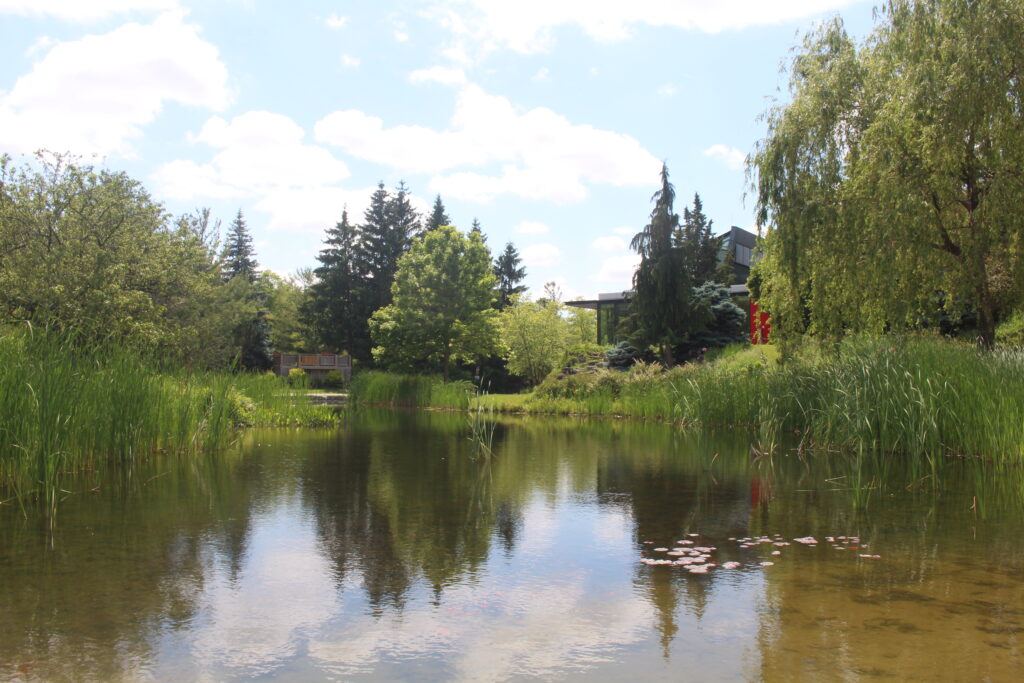
One of the special things about the Humber Arboretum is that you can explore different ecosystems without leaving the city. You’ll find forests, meadows, wetlands, ponds and the Humber River all in one place!
I spent a lot of time walking along the Humber River, which runs through the entire Arboretum. The river covers 908 square kilometres in total and was named a Canadian heritage river in 1999 for its cultural and recreational importance. You should definitely check it out – it’s the only designated heritage river in the GTA.
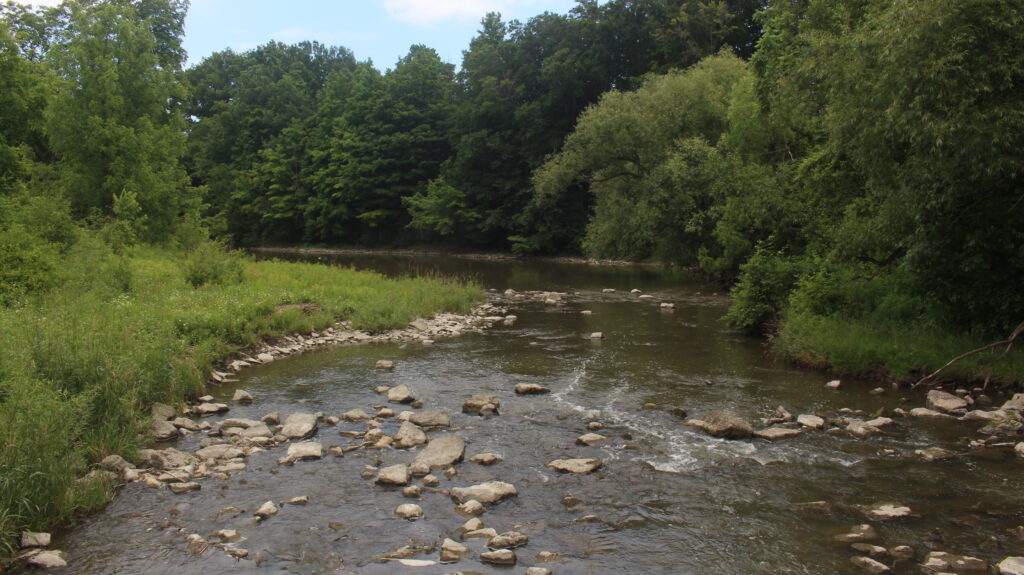
The wetlands and the Humber Pond are also exciting aspects of the ecosystem. The Arboretum has many wetlands, some present all year and some seasonal. They help prevent flooding, improve the water quality of rivers and lakes and provide essential habitats for wildlife. As part of the 2019-2024 Strategic Plan, the Humber Arboretum has been working on preserving and reconstructing wetlands based on their historical locations.
The Humber Pond was built in the mid-1980s and manages the runoff water from the North campus before it reaches the Humber River. This helps prevent pollutants and sediment from construction, roads and winter sanding from contaminating the river.

In addition to all the greenery, the Arboretum has a memorial reflection space where Humber College and the University of Guelph-Humber honour the lives of students, staff and faculty who have passed away.
Animals – a lot of them

I’ve got to be honest, this was my absolute favourite part! With its diverse ecosystems, the Arboretum is home to a wide array of animals. From mammals to birds, reptiles to amphibians, fishes to insects – you name it, they’ve got it!
Let me break it down by class. Among the mammals, I spotted raccoons, squirrels, chipmunks and rabbits. Although I saw them throughout the entire space, they seemed to hang out mostly in the main area of the Arboretum.
As for our feathered friends, there’s an incredible variety of birds here. I mean when I use this adjective, citizen scientists have identified over 150 bird species at the Humber Arboretum. I have to admit that I don’t really know much about animal species so I had to look up their names. A great blue heron, American tree sparrows, red-winged blackbirds, American robins and the superstar Canada goose are all species I spotted.
I even caught sight of amphibians like the green frog and some tiny insects – I couldn’t identify its species but there was a small orange butterfly that looked like a skipper.
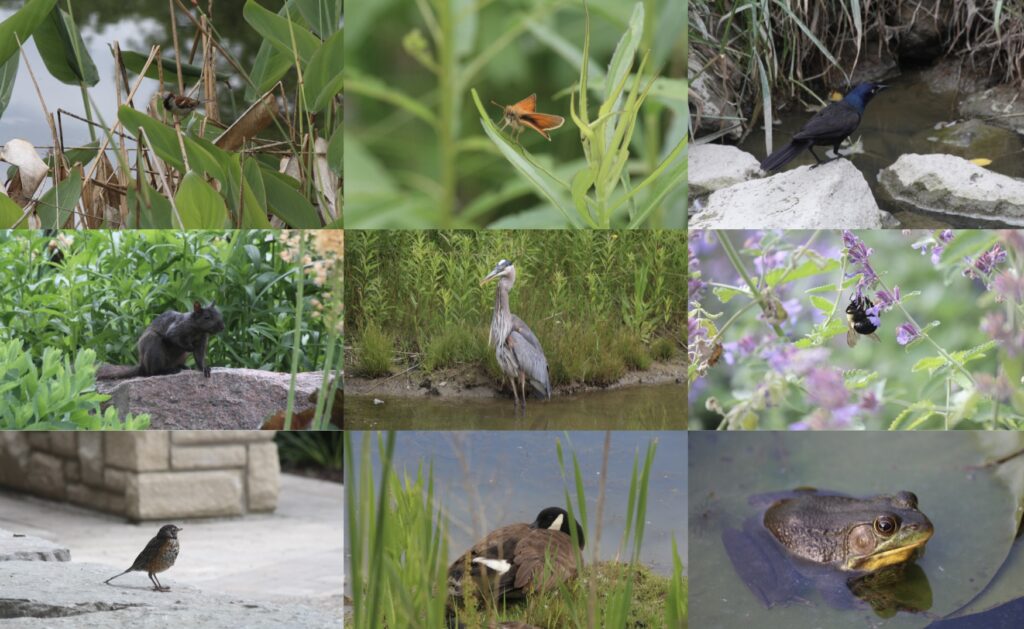
If you’re into wildlife photography like I am, you’re going to love the Humber Arboretum. They’ve even got a bird sanctuary as part of the Toronto Flyways Project. It’s filled with native trees, shrubs, wildflowers and habitat structures to give birds extra food and shelter. Plus, the sanctuary also features scattered sculptures of birds, adding to its charm.
Gardens

Flowers, flowers and more flowers, if you love them, the Humber Arboretum is your paradise. Known for its horticulture and gorgeous gardens, the Arboretum will amaze you with its greenery and vibrant colours. As I walked over bridges, followed curving paths and explored wood and stone structures, I was surrounded by breathtaking plant life.
The Arboretum changes a lot throughout the year, with 20,000 flowering annuals planted annually and stunning perennials like daylily, daisy and echinacea. It also features a large collection of spring flowering trees and shrubs such as the famous magnolia, viburnum and lilac. Other highlights include the summer cacti garden and picturesque winter landscapes.
One of the standout gardens is the Garden of the Rising Moon. Inspired by twilight and waterfalls, it was designed to celebrate the beauty of the evening. Fun fact: this garden was built with the help of Humber landscaping and horticulture students. This is also a popular spot for wedding photos!

While the Garden of the Rising Moon offers a serene atmosphere with the sound of a stream cascading from pool to pool, the Tranquility Bird Garden has all but tranquillity. Created in partnership with Birds Canada, this garden supports our friends from the sky, always helping to pollinate plants, disperse seeds and recycle nutrients back into the earth.
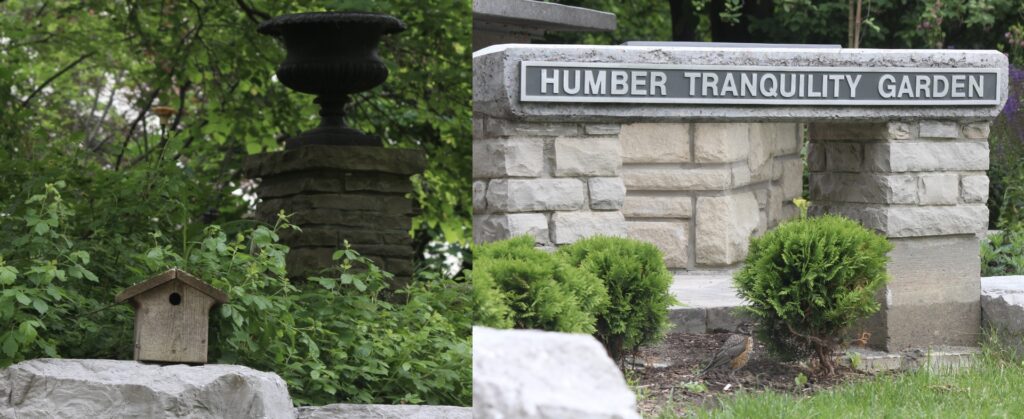
Among all, the Humber Food Learning Garden caught my eye. Built and maintained with the help of Humber students, it’s the perfect place to learn more about sustainable urban agriculture, local food security and how to grow and harvest fresh food. The garden addresses food insecurity and provides growing solutions to the issue. If you’ve ever eaten at the Humber Room, your ingredients came from the Humber Food Learning Garden!
Trails and discovery walks

If you’re looking for exercise options like walking or cycling, the Humber Arboretum hosts many trails and discovery walks for you to enjoy.
As you explore, you’ll come across the Carolinian Life Zone, famous for its deciduous trees and diverse wildlife. This type of forest is mainly found in the United States, with only the very northern edges extending into Canada. This means you’ll see many plants and animals here that you won’t find naturally occurring anywhere else in the country. You can’t miss this!
Just a heads up, prepare yourself to walk! The Humber Arboretum and West Humber River Valley route takes about two hours to complete. One cool feature here – and very helpful – is the stretching points along the trails, allowing you to stay on top of your game while enjoying the greenery to the fullest.

At the end of my journey, I climbed up the hill to reach the sunset point at the Humber Arboretum. I pulled out a bowl of fruits that I brought from my backpack and savoured the relaxing and jaw-dropping sunset. After a long day of walking and taking pictures, this view was exactly what I needed to unwind.
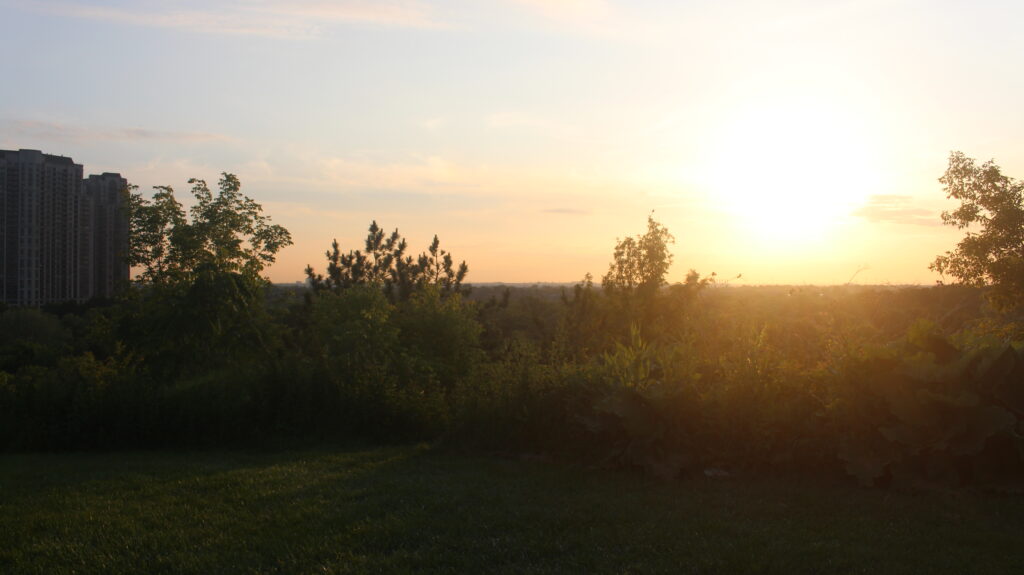
Among the animals, flowers and trails, my experience at the Humber Arboretum was unforgettable. Gather your friends, plan a picnic and explore the unique ecosystems at the Humber Arboretum!
If you’ve ever visited the area, share your favourite pictures and moments with us on our socials @shareignite.
Feature image courtesy of Fernando Bossoes.
Are you looking for other activities for the summer? Discover five exciting volunteer opportunities for you to try!
Follow us on Facebook, Instagram and TikTok for all things student life.
